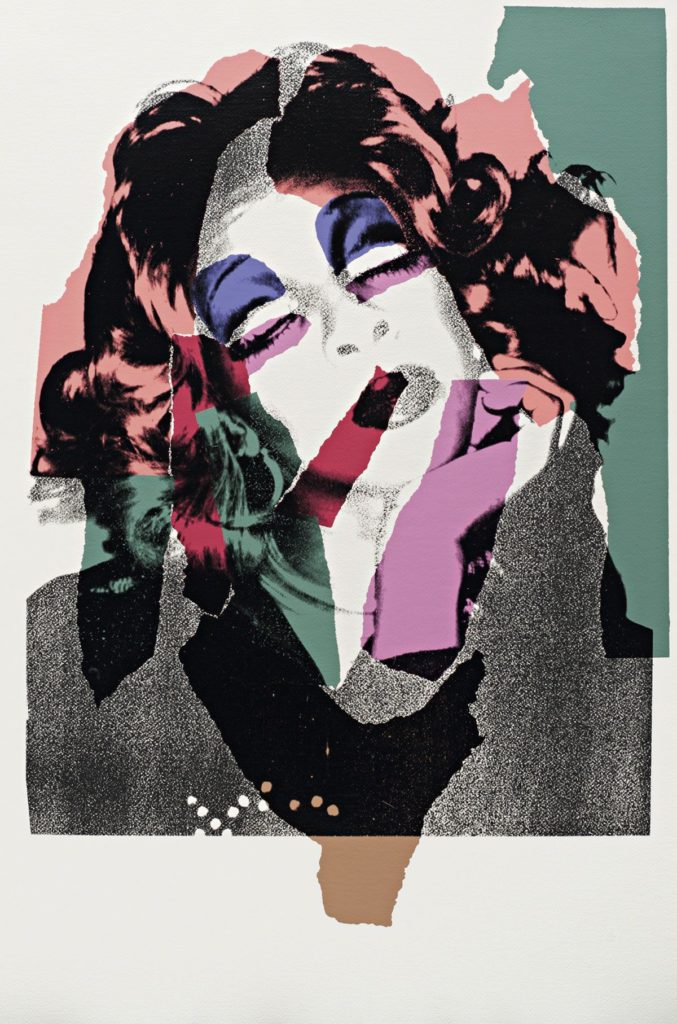Christmas in Pop Art: Celebrating Icons and Festivity
Christmas overflows with iconic imagery—Santa Claus, Rudolph, snowmen, candy canes, presents, and sparkling ornaments. These vibrant visuals...
Errika Gerakiti 19 December 2024
A club The Gilded Grape, situated in the no man’s land of Eighth Avenue and West 45th Street in New York City, was a hub of drag queens and Black and Hispanic trans women. In 1975, Bob Colacello, future Interview magazine editor and friend of Andy Warhol, entered it looking for drag queens ready to model for Andy for 50 bucks. This is how the series Ladies and Gentlemen was born.

The idea for the series came from Anselmino, a protegeé of Alexander Iolas, an art dealer who had previously commissioned from Warhol an edition of 100 prints of his earlier Man Ray portrait. When Warhol went to Turin in Italy on an invitation to sign his prints, Anselmino suggested to him to do a series on drag queens.



The models could dress and pose in whatever way they wanted. To make the portraits, Warhol followed his customary formula: first, he took a Polaroid photo of the sitter, then silkscreened it onto a canvas. The canvas was eventually covered with brightly colored, synthetic polymer paints. What makes these portraits different from their later and high-paying models from the 1980s, the drag queens were unknown to the wider public and completely anonymous.



The resulting portraits speak for the performative nature of the sitters: on one hand, they are portrayed in a classical fashion, often at a three-quarter angle and gazing at the viewer with a variety of expressions. On the other hand, the bright paint applied in extremely dense brushstrokes exaggerates the heavily-lipsticked mouths and long artificial lashes – the masks that they’ve created for themselves.



The series titled Ladies and Gentlemen, or the Drag Queen Paintings, was first exhibited in the Italian city of Ferrara and reviewed by Italian filmmaker and poet Pier Paulo Pasolini, to whom the trans women world was very familiar, and who was brutally murdered just one month after he had written this review.



Is not the effort made by these “Transvestites” to show themselves in a triumphant-looking mood suffused with wishful thinking and touching humanity? But beyond this effort they do not go. Naturally, the “Different” in its permissive New York ghetto can triumph provided it does not go outside a behaviour by which it can be recognized and tolerated the feminine arrogance of these males is merely the grimace of the victim who wants to soften the slaughterer’s heart with a clownish regal dignity. And it’s this wry smile which makes the “Transvestites” all the same, like Byzantine dignitaries in a star-spangled apse.
Excerpt from Pasolini’s Andy Warhol’s Ladies and Gentlemen Monograph, 1998.



Commenting on the series, Warhol talked about his models:
I wonder whether it’s harder for 1) a man to be a man, 2) a man to be a woman, 3) a woman to be a woman, or 4) a woman to be a man. I don’t really know the answer, but from watching all the different types, I know that people who think they’re working the hardest are the men who are trying to be a woman. They do double-time. They do all the things: they think about shaving and not shaving, of primping and not primping, of buying men’s clothes and women’s clothes. I guess it’s interesting to try to be another sex.
Andy Warhol, The Philosophy of Andy Warhol (From A to B and Back Again), New York, 1975.
DailyArt Magazine needs your support. Every contribution, however big or small, is very valuable for our future. Thanks to it, we will be able to sustain and grow the Magazine. Thank you for your help!